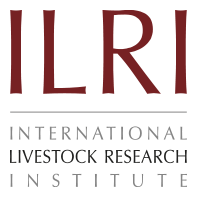J. Philipsson,1 J.E.O. Rege,2 E. Zonabend1 and A.M. Okeyo3
1Swedish University of Agricultural Sciences (SLU), Department of Animal Breeding and Genetics, P.O. Box 7023, S–750 07 Uppsala, Sweden
2Institute for People Innovation & Change in Organizations (PICO) P.O.Box 1094 00502, Nairobi Kenya
3International Livestock Research Institute (ILRI) P.O. Box 30709 Nairobi 00100, Kenya
This module discusses important factors to consider when designing sustainable genetic improvement programmes, especially under tropical conditions. Previous attempts to launch breeding programmes in developing countries have too often failed for several reasons, although there are success stories to learn from as well. Long-term and simple strategies are necessary as is the need to efficiently exploit the potential of indigenous breeds. Increased productivity per animal or area of land used also need to be considered. However, that must be achieved while also considering the variable socio-economic and cultural values of livestock in different societies or regions. Within the module there are links [blue] to web resources and [green] to case studies and other related components of this resource that help illustrate the issues presented.
- Animal improvement for increased productivity and food availability
- Previous genetic improvement programmes—Lessons
- Some considerations when designing a breeding programme
- Developing the breeding programme
- Balancing rate of genetic gain, diversity and environmental impact
- Monitor the breeding programme to show impact
- Research is needed to support the breeding programme
- Globalization of breeding programmes—Opportunities and threats
- Measures to conserve threatened breeds
- References
- Related literature
Citation
Module 3: Philipsson J., Rege, J.E.O., Zonabend E. and Okeyo A.M. 2011. Sustainable breeding programmes for tropical farming systems In: Animal Genetics Training Resource, version 3, 2011. Ojango, J.M., Malmfors, B. and Okeyo, A.M. (Eds). International Livestock Research Institute, Nairobi, Kenya, and Swedish University of Agricultural Sciences, Uppsala, Sweden









